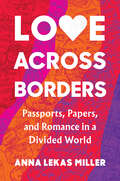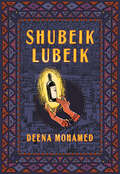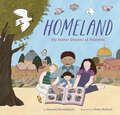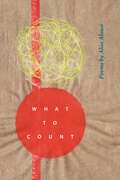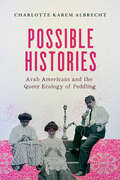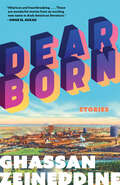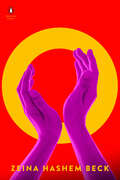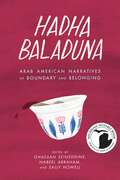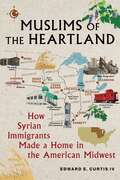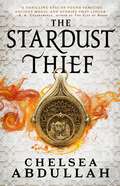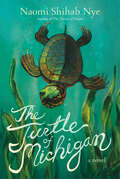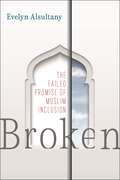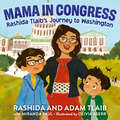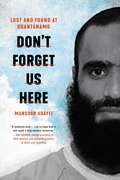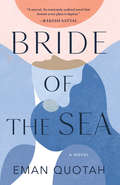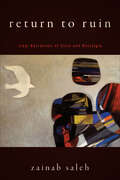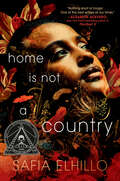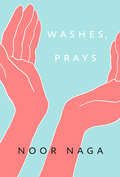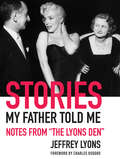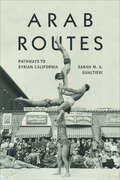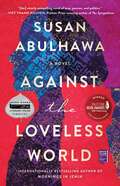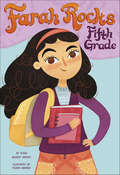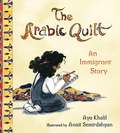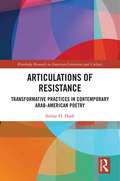Special Collections
Arab American Book Award
- Table View
- List View
| Year | Category | Award | Title | Author | Date Added | Action |
|---|---|---|---|---|---|---|
| 2024 | Nonfiction | Winner |
|
Anna Lekas Miller | 09/10/2024 | |
| 2024 | Fiction | Winner |
|
Deena Mohamed | 09/10/2024 | |
| 2024 | Children's Literature | Winner |
|
Hannah Moushabeck | 09/10/2024 | |
| 2024 | Poetry | Honorable Mention |
|
Alise Alousi | 09/10/2024 | |
| 2024 | Nonfiction | Honorable Mention |
|
Charlotte Karem Albrecht | 09/10/2024 | |
| 2024 | Fiction | Honorable Mention |
|
Ghassan Zeineddine | 09/10/2024 | |
| 2023 | Poetry | Winner |
|
Zeina Hashem Beck | 09/10/2024 | |
| 2023 | Nonfiction | Winner |
|
Nabeel Abraham and Sally Howell and Dunya Mikhail and Yousef Alqamoussi and Teri Bazzi and Hayan Charara and Mai Jakubowski and Jeff Karoub and Rania Matar and Geri Alumit Zeldes and Hanan Ali Nasser and Yasmine Rukia and Kamelya Omayma Youssef and Ghassan Zeineddine | 09/10/2024 | |
| 2023 | Nonfiction | Winner |
|
Edward E Curtis IV | 09/10/2024 | |
| 2023 | Fiction | Winner |
|
Chelsea Abdullah | 09/10/2024 | |
| 2023 | Young Adult | Honorable Mention |
|
Naomi Shihab Nye | 09/10/2024 | |
| 2023 | Nonfiction | Honorable Mention |
|
Evelyn Alsultany | 09/10/2024 | |
| 2023 | Children's Literature | Honorable Mention |
|
Miranda Paul and Rashida Tlaib and Adam Tlaib | 09/10/2024 | |
| 2022 | Nonfiction | Winner |
|
Mansoor Adayfi | 03/23/2023 | |
| 2022 | Fiction | Winner |
|
Eman Quotah | 03/23/2023 | |
| 2022 | Nonfiction | Honorable Mention |
|
Zainab Saleh | 03/23/2023 | |
| 2022 | Children/Young Adult | Honorable Mention |
|
Safia Elhillo | 03/23/2023 | |
| 2021 | The George Ellenbogen Poetry Award | Winner |
|
Noor Naga | 03/23/2023 | |
| 2021 | Nonfiction | Winner |
|
Charles Osgood and Jeffrey Lyons | 03/23/2023 | |
| 2021 | Nonfiction | Winner |
|
Sarah Gualtieri | 03/23/2023 | |
| 2021 | Fiction | Winner |
|
Susan Abulhawa | 03/23/2023 | |
| 2021 | Children/Young Adult | Winner |
|
Susan Muaddi Darraj | 03/23/2023 | |
| 2021 | Children/Young Adult | Winner |
|
Aya Khalil | 03/23/2023 | |
| 2021 | Nonfiction | Honorable Mention |
|
Sirene Harb | 03/23/2023 | |
| 2020 | Fiction | Winner |
|
Laila Lalami | 11/10/2020 |
